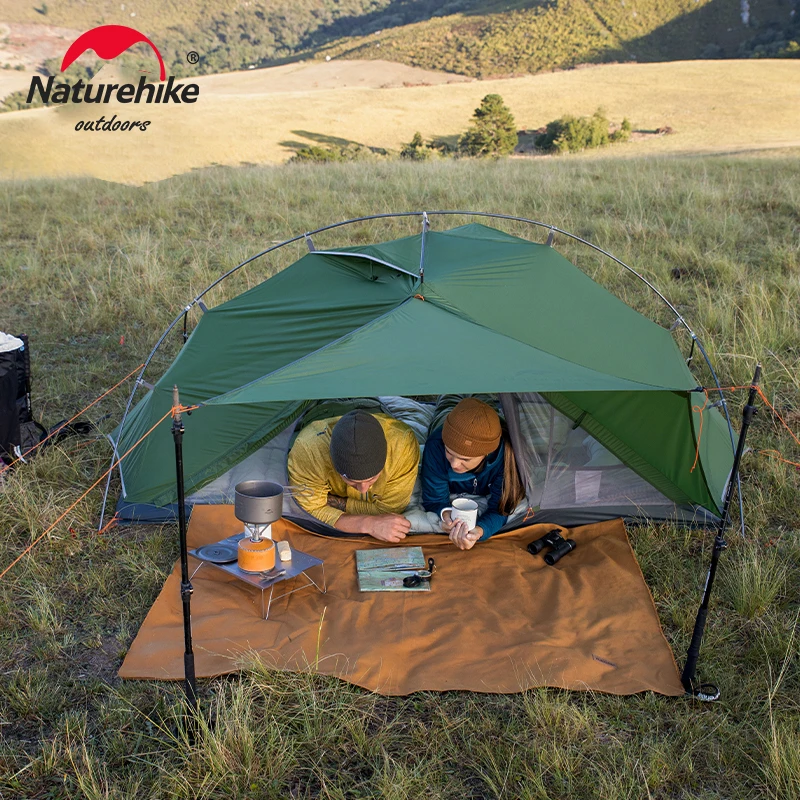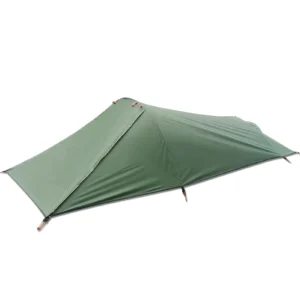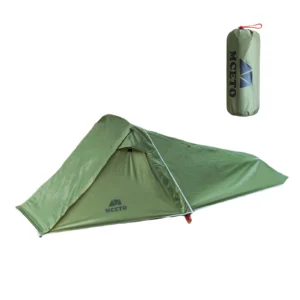Understanding the Trekking Pole Tent Concept
Trekking pole tents represent a revolutionary approach to outdoor shelter that has transformed the backpacking world. At their core, these innovative shelters eliminate traditional tent poles, instead utilizing the trekking poles that hikers already carry for support. This seemingly simple concept delivers remarkable benefits, with the most significant being substantial weight reduction.
The fundamental principle behind trekking pole tents is elegant efficiency. By repurposing equipment you’re already carrying, these shelters eliminate redundant weight while maintaining structural integrity. Many trekking pole shelters weigh just 1-2 pounds (450-900g) compared to 3-5 pounds (1.4-2.3kg) for traditional tents—a reduction that can transform your hiking experience over long distances.
This shelter style gained momentum in the early 2000s as ultralight backpacking philosophies became more mainstream. What began as a niche approach among distance hikers seeking to minimize their load has evolved into a substantial segment of the outdoor shelter market. The appeal of compact shelters for two campers has grown as manufacturers have refined designs to maximize space efficiency while minimizing weight.
Today’s ultralight trekking pole tents represent the culmination of years of design innovation, offering sophisticated solutions that rival traditional tents in comfort while significantly undercutting them in weight and pack size. For many hikers, the multi-functionality of using one piece of gear for multiple purposes perfectly embodies the “less is more” ultralight philosophy.
The Science Behind Non-Freestanding Structures
Trekking pole tents operate on fundamentally different architectural principles than conventional tents. While traditional freestanding tents rely on rigid, self-supporting pole systems, trekking pole shelters employ a sophisticated tension-based architecture that creates remarkable stability with minimal materials.
The key to these structures lies in the balanced interplay between three primary forces: the compression force of the poles pushing upward, the tension of the fabric pulling outward, and the anchoring force of stakes securing the system to the ground. When properly executed, this creates a remarkably stable structure despite using fewer rigid components.
The fabric in these shelters acts not merely as a weather barrier but as a crucial structural element. When properly tensioned, the fabric distributes forces across the entire shelter surface, creating a unified system where each component supports the others. This explains why mastering lightweight tent setup is so important—proper staking and tensioning aren’t just about appearance but fundamental to structural integrity.
Wind forces affect these shelters differently than freestanding tents. A properly pitched trekking pole shelter can actually become more stable as wind increases (up to a point), as the pressure further tensions the fabric. However, this requires correct orientation to the wind and proper tensioning. The aerodynamic profiles of many designs also help them shed wind effectively, with pyramid shapes being particularly adept at handling strong gusts from any direction.
Essential Components of a Trekking Pole Tent System
Shelter Body
The primary component is the shelter body, which comes in single-wall or double-wall construction. Single-wall designs integrate the waterproof layer and living space into one piece, maximizing weight savings but potentially increasing condensation issues. Double-wall designs separate the inner tent (breathable) from the rainfly (waterproof), improving ventilation but adding some weight.
Common materials include Dyneema Composite Fabric (DCF, formerly Cuben Fiber), which offers incredible lightweight waterproofing at premium prices, and silnylon/silpoly (silicone-impregnated nylon or polyester), which provides good waterproofing at more affordable price points.
Trekking Poles
The poles literally provide the backbone of these shelters. When selecting compatible trekking poles for tents, important considerations include:
- Adjustable length to match shelter requirements
- Secure locking mechanisms to prevent collapse under tension
- Sufficient strength to support the shelter in adverse conditions
- Compatible tip design that won’t damage the tent
Stakes and Anchoring
Stakes are not merely accessories but critical structural components. Quality stakes are essential, with different types offering advantages in various conditions:
- Y-stakes or V-stakes: Good all-around performance
- Shepherd’s hook: Lightweight but less holding power
- Snow/sand stakes: Wider surface area for loose ground
- Titanium shepherd’s hooks: Ultralight option for firm soil
Guylines & Tensioners
Quality guylines provide essential stability, especially in wind. Most high-end shelters use reflective cord for visibility and include built-in tensioners or line-locks for easy adjustment. The ability to quickly adjust tension is crucial for maintaining shelter structure as conditions change.
Optional Components
Groundsheets protect tent floors and can be sized precisely to the shelter footprint. Pole jacks or extenders allow for taller peak heights or adaptation to poles that aren’t quite the right length. These components round out the trekking pole backpacking tent system, allowing for customization based on conditions and personal preference.
Common Trekking Pole Tent Designs and Their Mechanics
Pyramid (Mid) Designs
Pyramid shelters, often called “mids,” utilize a single central pole to create a cone-like structure with fabric extending to the ground on all sides. This design:
- Offers exceptional stability in wind from any direction
- Creates excellent interior volume-to-weight ratio
- Sheds snow effectively due to steep sides
- Provides simple, fast setup with minimal components
The trade-off is somewhat limited headroom along the edges and a central pole that occupies interior space.
A-Frame/Wedge Designs
These shelters harken back to traditional tent shapes but eliminate dedicated poles:
- Use two trekking poles (one at each end) to create a ridge
- Often feature more vertical sidewalls for better livable space
- Typically offer good headroom along the center line
- Usually include a bathtub floor to prevent water entry
A-frames generally provide good headroom but may be less stable in crosswinds compared to pyramids.
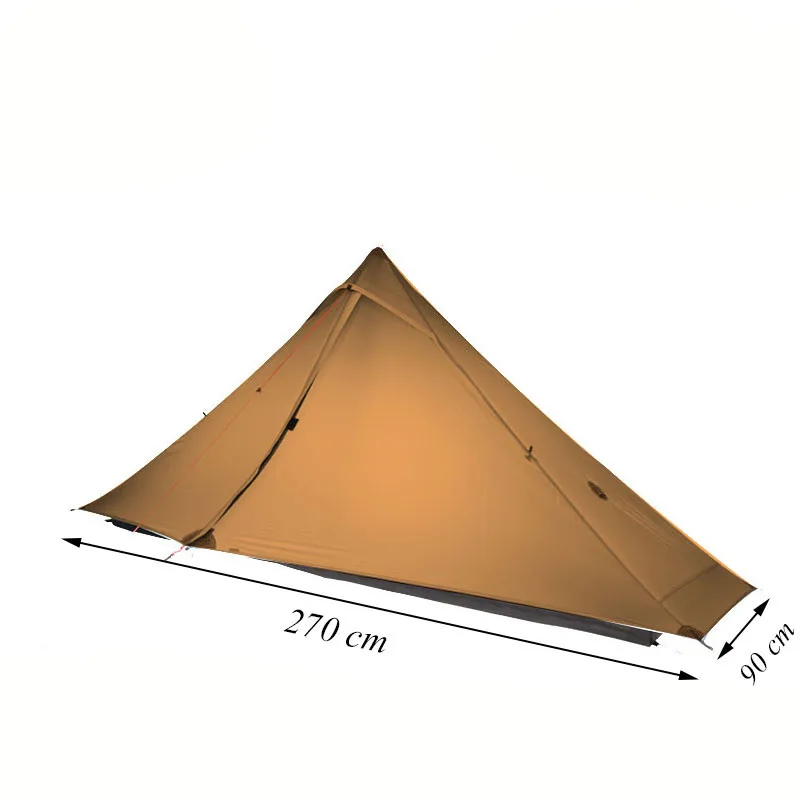
Hybrid and Innovative Designs
Modern trekking pole tent designs continue to evolve with innovative approaches:
- Offset pole placements to maximize interior space
- Partial freestanding designs that incorporate some dedicated pole sections
- Modular systems that can be configured multiple ways
- Asymmetrical designs optimized for specific sleeping arrangements
Single-Wall vs. Double-Wall Construction
This fundamental design choice affects condensation management, weight, and setup complexity:
Single-wall advantages:
– Lighter weight
– Simpler, faster setup
– Less packed volume
Double-wall advantages:
– Better condensation management
– Often more versatile in varied conditions
– Inner tent can sometimes be used alone in good weather
The optimal choice depends on your typical camping environment, with single-wall excelling in drier climates and double-wall performing better in humid conditions.
Step-by-Step Setup Process
Properly setting up a trekking pole tent requires technique but becomes second nature with practice. Follow these key steps for a successful pitch:
Select an appropriate site with good drainage, natural wind protection if possible, and ground that will hold stakes well. Clear away sharp objects that could damage the tent floor.
Position your shelter with consideration for wind direction, typically with the narrowest profile facing prevailing winds.
Stake the corners loosely to establish the footprint, but don’t fully tension yet. Some designs recommend staking the middle of sides first—always follow manufacturer guidance for your specific shelter.
Adjust trekking poles to the recommended height for your shelter. Height is critical—too short and you’ll have saggy fabric; too tall and you’ll place excess stress on material and seams.
Insert poles at designated points, either into grommets, pockets, or attachment points. Keep poles vertical unless design specifies otherwise.
Gradually tension all stake points in alternating sequence, working around the shelter rather than completing one side first. This ensures even tension across the structure.
Fine-tune the pitch by adjusting guy lines and stake positions until the fabric is evenly tensioned without wrinkles. Symmetry is both visually appealing and structurally important.
The proper trekking pole tent setup process takes practice, but most hikers can pitch their shelters in under five minutes with experience. Weather adaptations might include lower profiles in high winds or additional guylines in storm conditions.
Trekking Pole Specifications and Selection
Not all trekking poles are created equal when it comes to tent support. Consider these key factors when selecting poles for dual hiking-and-shelter use:
Material considerations: Aluminum poles offer reliability, reasonable weight, and affordability. Carbon fiber poles are lighter but typically more expensive and can potentially shatter under extreme stress rather than bend like aluminum.
Adjustment mechanisms must lock securely and maintain their set length under pressure. Flick locks typically outperform twist locks for shelter use, as they’re less prone to slippage under constant load.
Pole tips should be compatible with your shelter’s attachment points. Many tents include reinforced tip pockets, but sharp or aggressive pole tips can still damage fabric over time. Consider rubber tip covers when using poles with your shelter.
Height adjustability is essential, with most lightweight backpacking tents requiring pole heights between 115-130cm (45-51 inches). Verify your specific shelter’s requirements before purchasing new poles.
Strength ratings become particularly important when poles serve double-duty. Look for poles rated for your body weight plus pack weight, as these will typically have sufficient strength for shelter support as well.
Performance Comparison: Trekking Pole vs. Freestanding Tents
| Feature | Trekking Pole Tents | Freestanding Tents |
|---|---|---|
| Weight | 1-2 lbs (450-900g) | 3-5 lbs (1.4-2.3kg) |
| Packed Size | Typically smaller | Larger due to rigid poles |
| Setup Time | 3-5 minutes with practice | 2-4 minutes with practice |
| Learning Curve | Moderate | Easy |
| Wind Performance | Excellent when properly pitched | Good to excellent |
| Site Flexibility | Requires stakeable ground | Can be used on any surface |
| Interior Space Efficiency | Very high for weight | Moderate for weight |
| Condensation Management | Varies by design | Generally better in double-wall designs |
Trekking pole shelters excel in situations where weight and pack size are critical priorities, such as long-distance hiking, climbing approaches, or bicycle touring. Their performance-to-weight ratio is unmatched in the tent world.
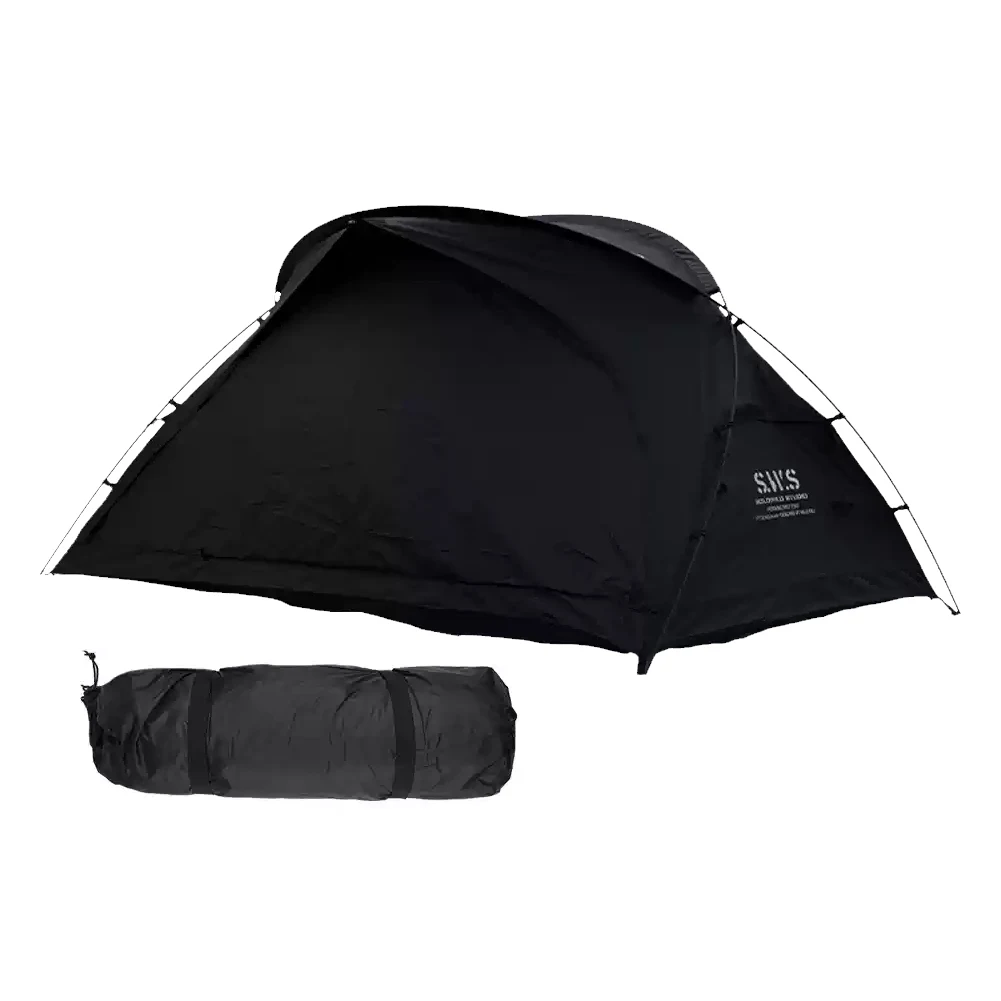
Traditional freestanding tents offer advantages for beginners, car camping, or situations where suitable staking ground is limited. Many camping shelter options for two provide more fool-proof setup but carry weight penalties that become significant on longer journeys.
The condensation management comparison depends heavily on specific designs. Double-wall trekking pole tents can rival freestanding tents in this regard, while single-wall designs typically require more active ventilation management.
Optimizing Your Pitch: Advanced Techniques
Mastering these advanced techniques will elevate your trekking pole tent experience:
Achieving maximum tension requires methodical adjustment. Start with corner stakes, then insert poles, then tension guy lines. The fabric should feel drum-tight when properly tensioned, without significant wrinkles or sagging areas.
Condensation management is critical, especially in single-wall designs. Keep doors partially open when weather permits, utilize all built-in vents, and consider site selection that encourages airflow. Morning condensation can be wiped away with a small pack towel.
Wind performance optimization begins with proper orientation—typically with the narrowest profile facing the wind. Additional guylines at mid-height points significantly increase stability in high winds. In extreme conditions, lowering the overall height of the shelter can dramatically improve wind resistance.
Adapting to difficult terrain is a key skill. On rocky ground, seek natural anchoring points or use rock stacks to secure guy lines. In snow, bury stakes horizontally or use gear like ice axes or skis as anchors. Mastering trekking pole tent setup in challenging environments expands your camping options significantly.
Quick-pitch methods for adverse weather focus on getting the shelter up fast, then refining. In heavy rain, consider pitching the rainfly first (if separate), then setting up the inner tent underneath in the protected space.
Trekking Pole Tent Maintenance and Care
Proper maintenance ensures your ultralight shelter delivers years of reliable service:
Cleaning techniques should match your tent’s materials. For most fabrics, gentle spot cleaning with mild soap and water works best. Avoid machine washing or harsh chemicals that can degrade waterproof coatings.
Drying and storage are critical. Never store a tent long-term while damp, as this can lead to mildew and fabric degradation. Dry completely before storage, and store loosely packed rather than compressed.
Field repairs are simplified with a small kit containing tenacious tape, replacement guylines, and a few spare stakes. Silicone-based sealants work well for seam repairs in silnylon/silpoly tents.
Preventative care includes careful site selection to avoid damaging materials, prompt cleaning of tree sap or other contaminants, and periodic reapplication of DWR (Durable Water Repellent) treatments as needed.
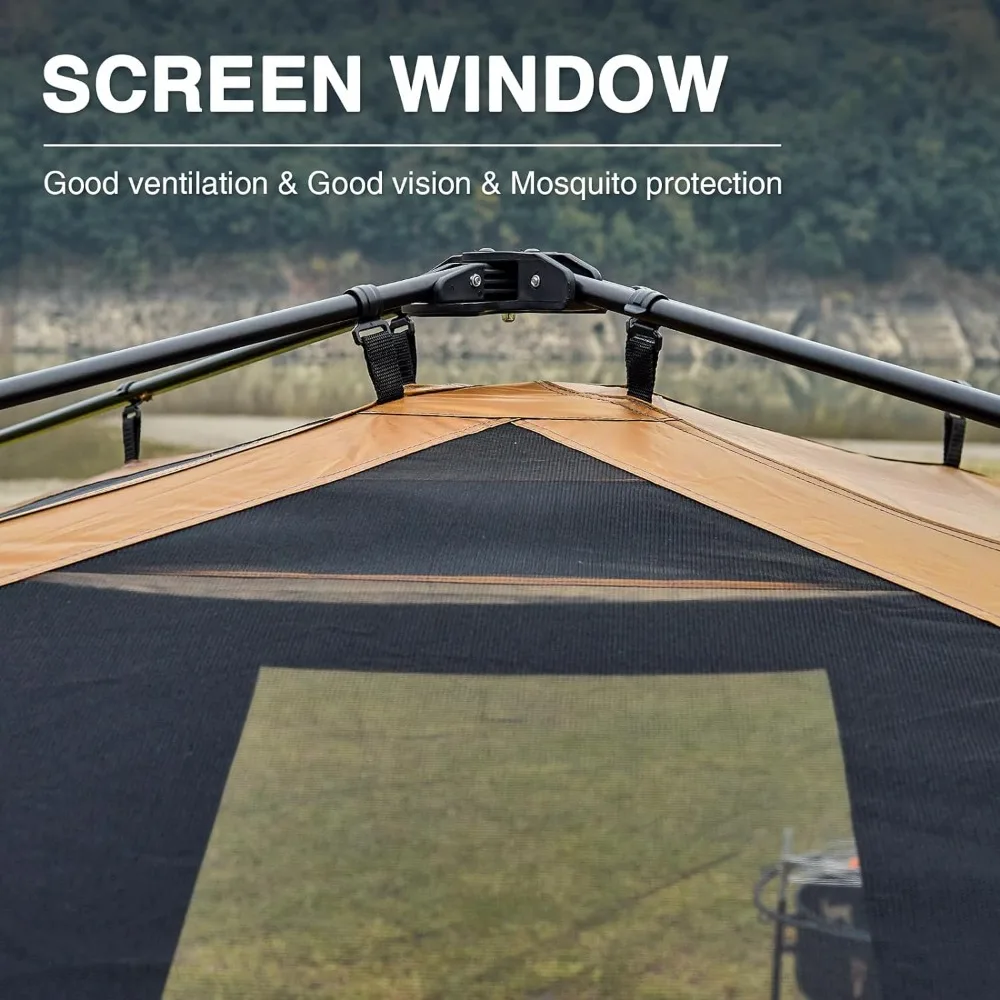
When properly maintained, most high-quality waterproof backpacking tents can provide reliable service for thousands of trail miles. The investment in proper care pays dividends in extended gear life and reliable performance when you need it most.
Is a Trekking Pole Tent Right for You?
These shelters excel for specific users and situations:
Long-distance hikers and thru-hikers benefit most from the weight savings, as every ounce matters when carried for hundreds or thousands of miles. The multi-functionality of trekking poles also appeals to those seeking to minimize carried items.
Ultralight backpackers naturally gravitate toward these shelters as part of a comprehensive lightweight gear system. For those counting ounces, a trekking pole tent is often the single biggest weight saving in their pack.
Beginners may experience a steeper learning curve with these shelters, but many find the weight benefits worth the initial setup challenges. Starting with pitching practice at home before backcountry trips can build confidence.
Lightweight Backpacking Tent, Ultralight Backpacking Tent, Ultralight Bivy Tent
Ultralight Single Person Camping Tent with Aluminum Poles for 3-Season Backpacking Waterproof DesignPrice range: $94.88 through $326.82 Select options This product has multiple variants. The options may be chosen on the product pageLightweight Backpacking Tent, Ultralight Backpacking Tent, Waterproof Backpacking Tent
$391.05 Select options This product has multiple variants. The options may be chosen on the product pageCompact Backpacking Tent, Lightweight Backpacking Tent, Waterproof Camping Tent
$335.52 Select options This product has multiple variants. The options may be chosen on the product pageUltralight Backpacking Tent, Ultralight Dome Tent, Winter Camping Tent
Price range: $369.63 through $370.07 Select options This product has multiple variants. The options may be chosen on the product pageBackpacking Tent with Vestibule, Freestanding Backpacking Tent, Lightweight Backpacking Tent
Price range: $446.89 through $447.22 Select options This product has multiple variants. The options may be chosen on the product pageBackpacking Tent with Vestibule, Trekking Pole Backpacking Tent, Waterproof Camping Tent
Price range: $271.99 through $519.52 Select options This product has multiple variants. The options may be chosen on the product page
Trip types where these shelters excel include long-distance hiking, alpine travel where weight matters, and any adventure where minimizing pack weight enhances enjoyment. The appropriate backpacking tent weight often depends on your overall hiking style and distance goals.
Transitioning from freestanding tents works best with a gradual approach—practice in the backyard, then on short trips, before committing to a challenging expedition with an unfamiliar shelter.
Frequently Asked Questions About Trekking Pole Tents
How do trekking pole tents perform in extreme weather?
When properly pitched, high-quality trekking pole shelters can withstand significant wind and precipitation. Many designs, particularly pyramids, excel in snow loading and have been successfully used in alpine and winter conditions.
Can I use any trekking poles with any tent?
Not necessarily. Check your tent’s specifications for required pole height and strength. Most shelters work best with adjustable poles that can be set to specific lengths for optimal tensioning.
Are these tents difficult for beginners to set up?
There is a learning curve, but most users master setup within 3-5 practice attempts. The key is understanding the tensioning sequence specific to your shelter design.
How much weight do I actually save?
Typically, 1-3 pounds (450-1350g) compared to traditional tents of similar capacity. When you’re already carrying trekking poles, the shelter weight can be as little as 1 pound (450g) for minimalist designs.
What happens if a trekking pole breaks during my trip?
Most shelters can be rigged using a found stick, tying off to a tree branch, or by using guy lines to create alternative support structures. Some hikers carry a small carbon fiber or aluminum tent pole section as an emergency backup.
How do I manage condensation in a single-wall design?
Proper site selection (avoiding humid areas like riverside locations when possible), maintaining ventilation, and wiping down interior surfaces in the morning are key strategies. Some ultralight backpacking tents also include special ventilation features to minimize condensation.
When Traditional Tents Might Be a Better Choice
While trekking pole tents offer numerous advantages, they aren’t ideal for every situation:
Platform camping common on established trails with wooden tent platforms presents challenges for trekking pole shelters, as stakes cannot penetrate the platform. While adaptations exist (like tying off to platform edges), freestanding tents simplify setup in these environments.
Rocky terrain with minimal soil depth can make proper staking difficult or impossible. Some alpine areas or desert environments may not provide adequate anchoring options.
Casual campers who prioritize quick, intuitive setup over weight savings may prefer the simplicity of freestanding designs, especially for short weekend trips where the weight penalty is less significant.
Group sites with limited flat ground sometimes favor freestanding tents that can be pitched in smaller spaces without the need for numerous stake points and guy lines extending outward.
For all their advantages, trekking pole shelters represent a specific approach to outdoor shelter that works brilliantly for many users while being less than ideal for others. Understanding your priorities, typical camping environments, and personal preferences will guide you toward the optimal shelter system for your adventures.

